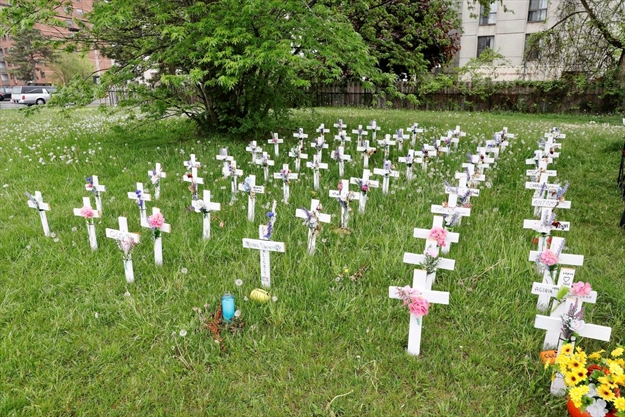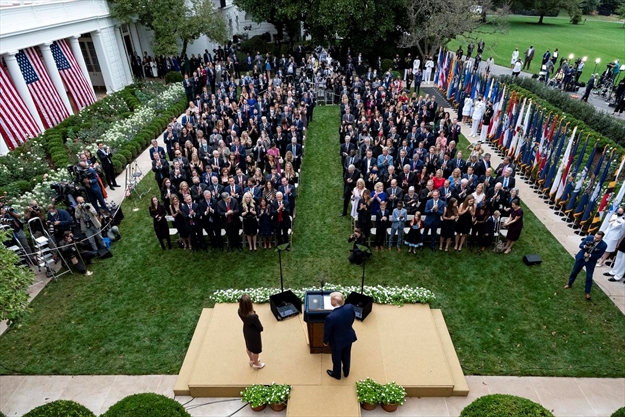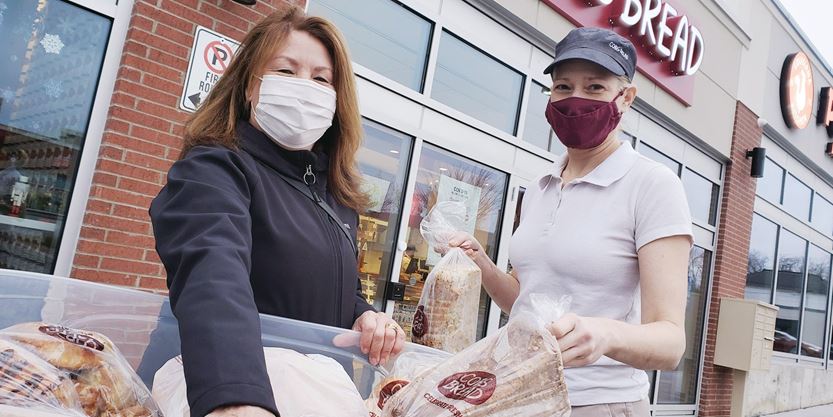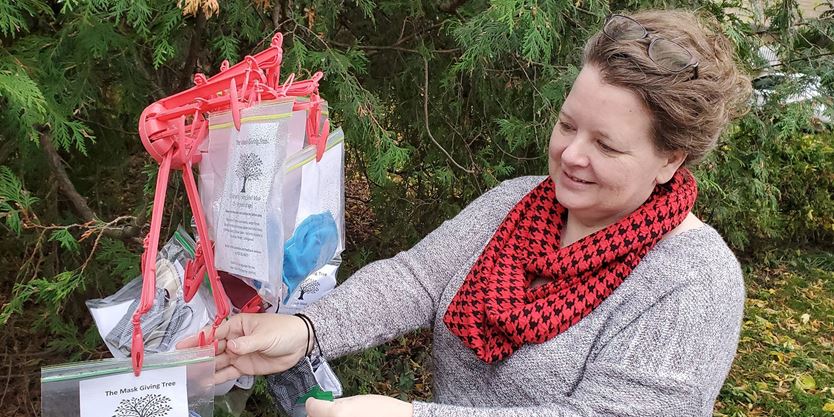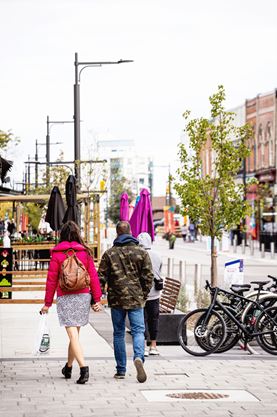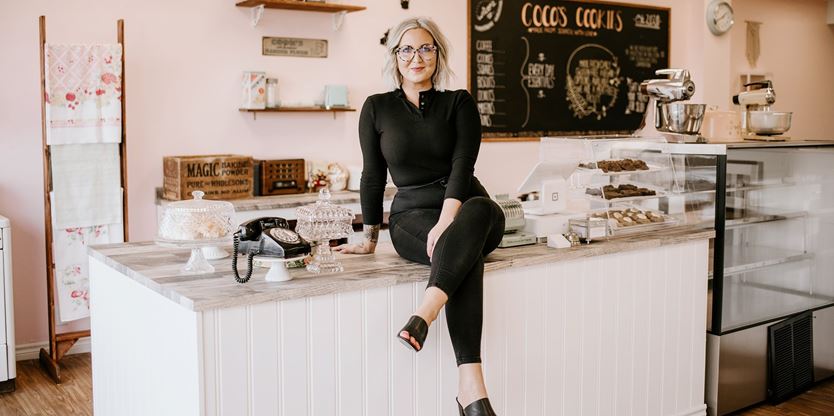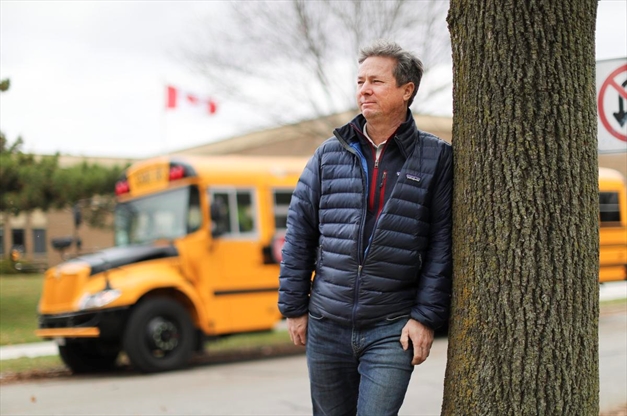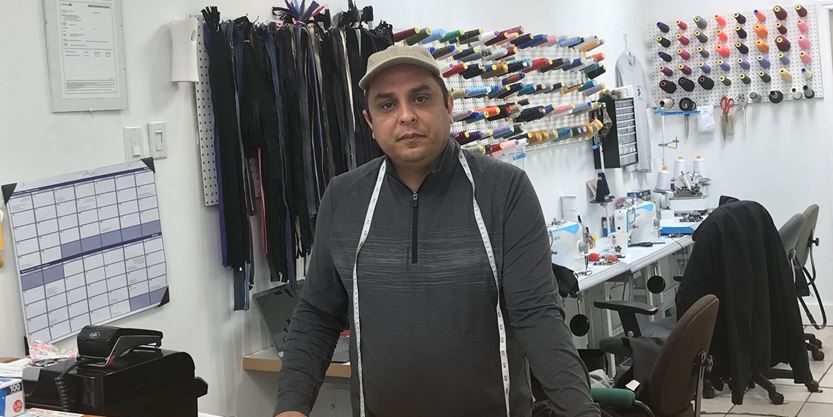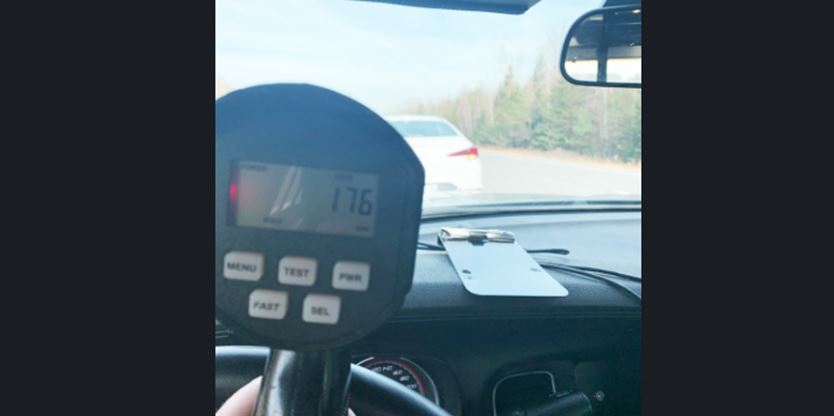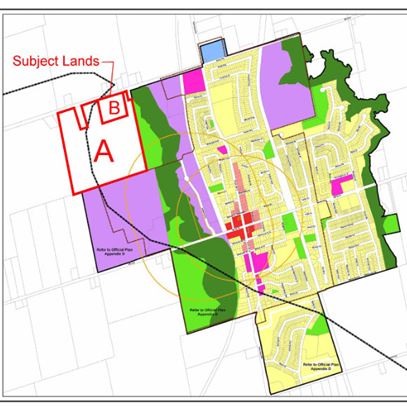Ontario’s premier is warning that hot spots are potentially days away from a lockdown, community cases are soaring, and the education minister has publicly contemplated extending winter break.
But the halls of the Toronto high school where Dieter Hartill works are unusually calm.
All the kids are wearing masks, muffling their speech. While about 80 per cent are still attending in-person classes, only half come each morning as part of the adapted schedule to reduce contact.

“There’s a lot less life,” said Hartill, a guidance counsellor. “The school is a quiet place now.”
A recent string of COVID-19 cases in students at the school “created a lot of fear and concern,” but a full-blown outbreak was avoided.
So far, the apocalyptic spread of COVID-19 in schools feared by many parents and teachers has not materialized. Toronto’s Medical Officer of Health Dr. Eileen de Villa has said schools don’t seem to be drivers of infection.
To date, there have been 1,115 cases in students and staff in nearly 440 English-language public and Catholic schools in Toronto — including 38 outbreaks, according to an independent database maintained by a group of volunteers that includes several scientists and analyzed by the Star.
There are almost 800 schools between the two boards. In the Toronto Catholic board there are about 43,000 students physically attending class and another 22,300 secondary students going to school; in the public board there are approximately 107,300 students in school in elementary and another 54,300 students physically attending high school.
At Etobicoke’s Martingrove Collegiate Institute, where Hartill works, there have been 11 recent student cases, eight of which were linked to an event that occurred outside school grounds; those cases did not translate into an outbreak (defined as two or more cases in the school with an epidemiological link within a two-week period.)
But with community transmission raging out of control, Hartill wonders how long schools can hold out. Recent cases in schools have also been slowly but steadily rising across the province. New York City announced the closure of its entire public school system on Wednesday.
The sad news of the death of a staff member due to COVID-19 at St. Francis de Sales Catholic School in Toronto’s hard-hit northwest corner was confirmed by the board the same day, but was not the result of any outbreak at the school.
“You don’t know what’s happening, especially as the community cases keep rising so much, and it looks like (schools are) going to be the last ones to close,” Hartill said.
It wasn’t that long ago, the end of October, that COVID-19 cases in Toronto Catholic and public schools numbered close to 600. Cases had just begun to appear in Lester B. Pearson Collegiate Institute in the public board, where an outbreak would later be declared. And there were single cases mounting at Glamorgan Junior Public School, which by then had two cases in students and nine in staff. The school now has a total of 14 cumulative cases.
After days of speculation over whether Ontario schools would close for an extended winter break, and comments from Premier Doug Ford that hinted they might, Education Minister Stephen Lecce said Wednesday it wasn’t necessary after consulting with the Chief Medical Officer of Health Dr. David Williams and the Public Health Measures Table.
Asked about the change in position at a press conference Wednesday, Ford said the safest place for kids is in schools.
“So far, knock on wood, it’s working fairly well,” he told reporters, even as hot spots are “staring down the barrel of another lockdown.”
But as it crossed that threshold, officials there announced that the entire public system would be shuttering and moving online.
In Toronto, the weekly average positivity rate — the percentage of people tested for COVID-19 who are found to have the virus — is already 6.2 per cent, with 14 neighbourhoods above nine per cent, according to an by the Toronto-based non-profit ICES (formerly the Institute for Clinical Evaluative Science).
Even if schools are not the drivers, it’s clear some community transmission is making its way into schools. So at what point does it tip over? And how close are we to that point?
Ahmed Al-Jaishi, a London, Ont.-based epidemiologist and PhD candidate at McMaster University, is part of a called COVID Schools Canada that has been tracking every school case and outbreak across the country.
Each report is linked to supporting evidence, such as a school board letter to parents, a notification on the school board or public health website, a provincial report, or media updates. The group’s goal is to increase transparency about risk in schools, a project they started before the
The team found 140 outbreaks within 134 schools across the province, so it’s not like schools are “completely safe,” Al-Jaishi said, but noted we don’t know the full-extent of school-related transmission because some outbreaks are missed (no contact tracing or lack of testing) or not reported.
Given the relatively low number of outbreaks compared to the number of schools in Ontario, closing schools should be a “last resort,” Al-Jaishi said.
“We do need to continue pushing for safer policies, like smaller class size, better ventilation and rapid testing” so that kids who are potentially infected could be removed from classrooms right away, he said.
At a certain point though, if community cases continue to rise, they will make their way into schools and there will be more outbreaks. “It’s almost like game over because we will have to close the school down,” he said, “especially in the hot-spot regions.”
In New York City, the three per cent positivity rate is controversial, with some pushing for the city to accept more risk in schools given their value to parents, kids and society, especially with indoor dining still permitted. Asked what the threshold was for Ontario, Ministry of Education spokesperson Caitlin Clark did not provide one and said the government will continue to follow advice from the Chief Medical Officer of Health and the COVID-19 command table.
“It is crucial that we keep in mind just how important in-class learning is for teachers and students,” said Liz Stuart, president of the Ontario English Catholic Teachers’ Association. “While teachers are doing everything they can to make remote learning as effective as possible, there is no substitute for in-person interaction between teachers and students, and between students and their peers.”
She noted that there are also concerns about equity, security, privacy, and excessive screen time, especially given the government’s mandate around synchronous online instruction. At the same time “we desperately need (the government) to also acknowledge their responsibility to implement all reasonable safety precautions.”
So far schools have been “remarkably successful at minimizing outbreaks,” Education Minister Lecce said in his Wednesday statement, nixing the idea of an extended holiday break, but added his government will continue to consider “any option” when it comes to schools.
An extended break could provide a buffer between busy classrooms and visiting grandma and grandpa, said Dr. Janine McCready, an infectious disease specialist at Michael Garron Hospital.
“The more introductions that you have in schools, the more likely you’re going to have one of those sparks cause other people to get infected and if you have very high rates, it’s kind of a statistical inevitability that you’re going to have spread,” she said.
While there haven’t been large numbers of outbreaks in schools, she said she worries we may be missing some of the picture. It can be very hard to know where the chain of infection started if, for example, a parent tests positive and then a kid without symptoms does as well — especially when so many kids are asymptomatic.
The province issued a reminder to principals on Tuesday that they are responsible for notifying the province of COVID-19 cases through an online reporting tool. Principals are expected to report cases by 10:30 a.m. every day when school is open.
“It is critical that boards continue to use the absence reporting tool in order to ensure the most up-to-date and accurate information is available,” said Deputy Education Minister Nancy Naylor, in an memo to education unions Wednesday.
While Toronto Public Health is still contact tracing when it comes to cases in schools, it has not yet resumed full tracing in the community. But there is a plan to scale up soon, said Dr. Vinita Dubey, Associate Medical Officer of Health.
Each case of COVID-19 in a school sparks a “detailed and careful investigation” to determine where the person got it and where they may have spread it, she added. “When a case is identified in a school, the school cohort (classroom, bus, after- or before-school program) is dismissed, and often recommended to go for testing.”
McCready agreed with Al-Jaishi that, given the value of schools, they should be kept as safe as possible and kept open as long as possible.
were loosened in October to let kids with runny noses and other short-term symptoms attend without a COVID test. This has resulted in a lot of confusion, McCready said, and should be reconsidered given “out of control” case numbers in the community.
She added that Toronto Public Health should also adopt a policy that if one person in a family has symptoms or exposure, the entire household should stay home while awaiting test results. McCready said she has seen a lot of cases where kids will go to school even when someone in their family is showing symptoms and eventually test positive.
Current TPH guidance states that if someone in a household has symptoms, they should get tested, “but others in the household can still attend school, as long as the person with symptoms was not a close contact,” said Dubey.
There are 24 active outbreaks in Toronto schools and she said there is a “basis to believe” public health measures in schools such as masks and physical distancing are working.
The Toronto District School Board has had 781 cases as of Nov. 16, (623 in students) and (158 in staff) and 26 outbreaks. It approved the spending of $30 million from its reserve funds to lower class sizes and prioritize areas at higher risk for COVID-19, where classes were reduced even further, said spokesperson Ryan Bird.
At the Toronto Catholic District School Board there have been 334 total cases (281 in students and 53 in staff) and 12 outbreaks. Trustee Maria Rizzo said she supports keeping schools open for the sake of students’ mental health, but is “worried.”
She’d also like to see an extended winter break to make sure cases caused by holiday gatherings don’t spread into schools.
The science on COVID-19 so far suggests that kids are more likely to have very mild symptoms or none at all, and very unlikely to get seriously ill or die. The picture on whether they transmit the disease the same way adults do is more muddled. One recent study in further complicated things by finding that three Australian children were infected with COVID-19 but kept testing negative.
de Villa reported that the positivity rate in kids aged 14-17 (7.6 per cent) was higher than younger kids aged 4-13 (4.7 per cent). McCready said high school and middle-schoolers getting together before or after school may be driving some of that.
Anne-Marie King, a Grade 11 and 12 religion teacher at St. John Paul II Catholic Secondary School in Scarborough, said she wonders why all classes aren’t online at this point. Her school has seen 11 COVID-19 cases.
“Whatever I’m doing in class where my safety is at risk, I can sit at home in the safety of my house and do online. It’s still interactive, but there’s no physical contact,” said King, who also worries about the health of her 78-year-old mother, with whom she lives.
She said there are rules in place to promote safety, but “they aren’t realistic.” King teaches in a portable where physical distancing is limited to just one metre because there simply isn’t enough space, she said. And, with no running water in the portable, she can’t wash her hands regularly.
King added that many students and teachers are burning out under the pressure to cram the curriculum into a short nine-week period.
Harvey Bischof, president of the OSSTF, said the worry in classrooms is “tipping over” into fear for some teachers as community cases rise.
There is still a need to reduce class sizes to conform to physical distancing rules in every other public space in the province, as well as provincial standards around ventilation, masking and busing,” he said. In October, the Ontario Labour Relations Board dismissed an by the province’s four major teachers unions (AEFO, ETFO, OECTA, OSSTF/FEESO) that sought to establish provincewide standards in these areas.
“I’m grateful so far that any school spread has been by all accounts relatively limited and not the worst-case scenario that we thought could potentially occur. But that said, as we go up to unprecedentedly high levels within the community, that just means introduction into vastly more schools and more chances of these occurrences happening,” Bischof said.
Editor’s note — Nov. 19, 2020: This story was edited to clarify how cases in schools are tracked by COVID Schools Canada.
With files from Michele Henry and Noor Javed
Patty Winsa is a Toronto-based data reporter for the Star. Reach her via email:
Kenyon Wallace is a Toronto-based investigative reporter for the Star. Follow him on Twitter: @KenyonWallace or reach him via email:
May Warren is a Toronto-based breaking news reporter for the Star. Follow her on Twitter:

